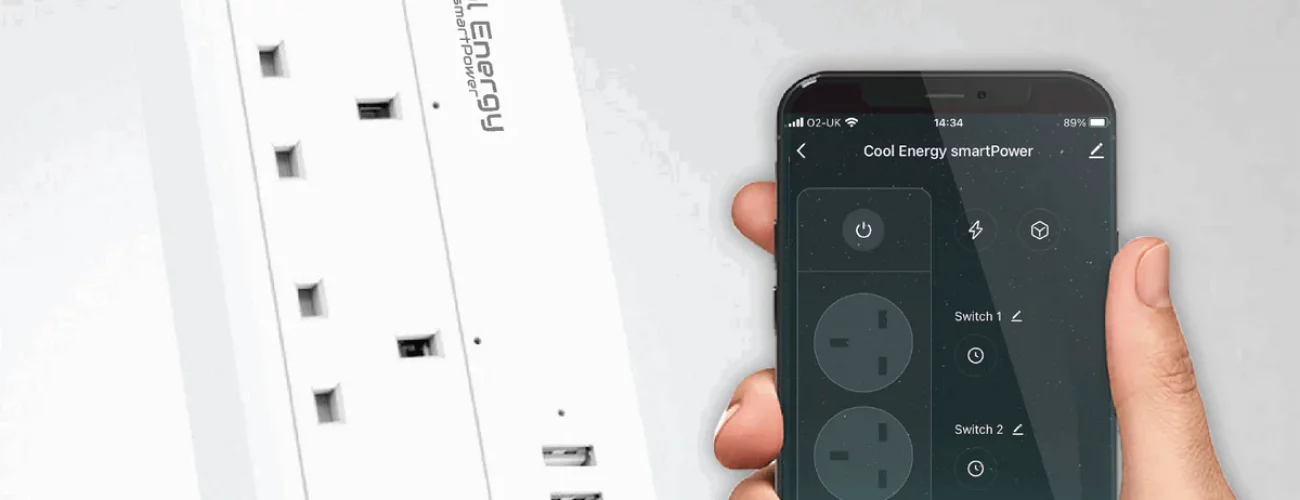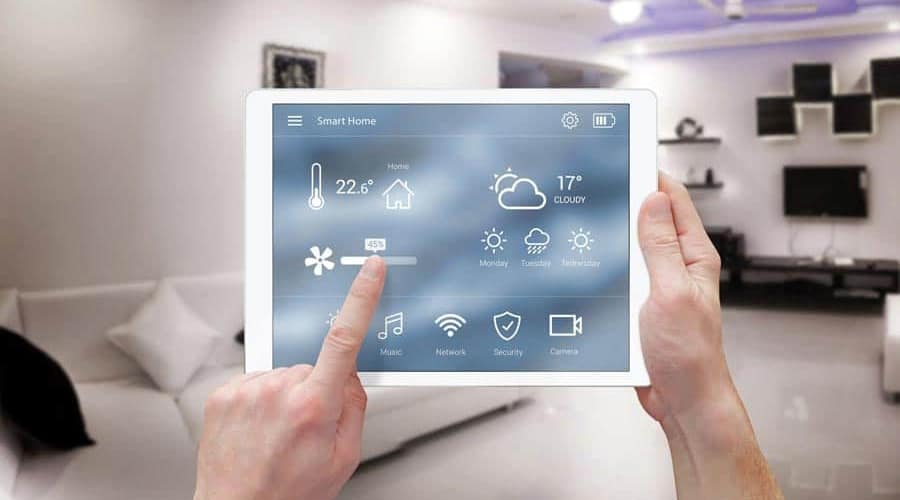Smart plugs are gaining widespread popularity as an effective means to upgrade regular appliances into smart devices. Numerous homeowners adopt smart plugs as an initial step towards establishing smart homes. Given this surging demand, there is a common inquiry among homeowners—do smart plugs contribute to energy savings?
A smart plug encompasses various high-quality features, and some of these offer practical methods to promote energy conservation, resulting in potential savings on utility bills. Here is a comprehensive overview of how smart plugs facilitate energy efficiency.

What's on this page?
What Is A Smart Plug And How Does It Work?
Before delving into whether smart plugs contribute to energy savings, it’s crucial to comprehend the functionality of these devices. So, what exactly is a smart plug? A smart plug is a receptacle designed to fit into standard electrical sockets and seamlessly integrate into a smart home network. Through a dedicated app on your smartphone or tablet, or a virtual home assistant device, you gain control over any device connected to the smart plug.
Many homeowners opt for smart plugs to transform ordinary devices into intelligent counterparts, providing enhanced control and customization options for everyday appliances such as coffee makers, table lamps, fans, and irons.
To unlock a plethora of features and ensure reliable performance, connecting your smart plugs to Wi-Fi is recommended. Here are some key features of smart plugs:
1. Compatibility with virtual home assistant devices, allowing direct voice commands.
2. Remote control of plugged-in devices via Wi-Fi through a smartphone or tablet.
3. Voice control options compatible with Google Assistant and Siri.
4. Timer-setting capability for automatic appliance activation or deactivation.
5. Real-time tracking of energy consumption, providing insights into cost implications.
6. Handheld remote controls with simple on/off features for those who prefer not to use smartphones.
7. Safety features like scheduling operational times and deterring potential intruders with scheduled lighting.
8. Specialized outdoor smart plugs designed for enduring various weather conditions.
9. Reduction of latent energy consumption by completely turning off devices, addressing standby mode energy usage.
10. Smart plug strips accommodating multiple devices, issuing alerts for overloads or safety hazards.
In response to the questions about electricity usage when switched on or off, it’s important to note that any plugged device consumes electricity when the switch is on. Leaving switches on does use electricity. Smart plugs, however, act as energy-saving solutions by automatically turning off devices entering standby mode, contributing to overall energy efficiency.
Want to learn more about Smart Plugs? Check out our page on What is a Smart Plug?
How Much Energy Do Smart Plugs Use?
To grasp whether smart plugs contribute to energy savings, let’s examine their energy consumption. Generally, a smart plug consumes approximately 1 watt of energy when in standby mode, with the exact wattage influenced by the type of connection it employs. Given that a smart plug is consistently linked to another device in your household, it remains active.
However, when connected to Wi-Fi, the smart plug typically utilizes about 1 to 2 watts at most per day. Opting for Zigbee or Z-wave networks for your smart plug, as opposed to Wi-Fi, can further reduce energy consumption, with an average ranging from 0.3 to 0.6 watts.
Do Smart Plugs Save Energy?
Certainly, smart plugs are effective in energy conservation. When utilized appropriately, they not only contribute to energy savings but also lead to reduced utility costs over time.
Some smart plugs offer valuable insights into energy consumption, allowing you to enhance your household’s energy efficiency. These statistics reveal areas where you spend the most money, enabling you to make informed changes and cut down on expenses.
Certain smart plugs even allow you to input your energy supplier’s pricing details, offering precise information on the costs incurred by your plugged-in appliances. This feature empowers you to make well-informed decisions about managing your household’s energy consumption. Monitoring energy usage is just one of the ways in which smart plugs facilitate energy savings.
Considering appliances in standby mode, a significant portion of electricity costs stems from devices that don’t fully shut off when manually switched off. These gadgets enter standby mode, consuming energy continuously. For instance, a TV on standby can consume up to five watts. While turning off devices at the wall may not result in a substantial cut in your energy bill, it does make a difference. Smart plugs prove beneficial by completely turning off such energy-consuming appliances instead of letting them linger in standby mode.
Households often spend a considerable amount, approximately £55 annually in the UK, powering electrical devices on standby. Smart plugs efficiently address this issue by working with various appliances, ensuring they are fully powered down. Additionally, they grant convenient remote control, eliminating the need to physically interact with electrical wiring or hard-to-reach places. This becomes particularly advantageous for forgetful individuals or those prone to leaving home with appliances still on. The ability to remotely power off appliances using a smartphone provides both convenience and peace of mind, making smart plugs a valuable addition for enhancing energy efficiency in households.
Setting Schedules With Smart Plugs
In addition to mitigating phantom loads and enabling remote control, you can further reduce your energy consumption by implementing schedules. Numerous smart plugs offer schedule creation capabilities, allowing you to ensure that all connected devices are turned off at specified times.
Some smart plugs feature sleep timers, permitting you to automatically power down appliances after a predetermined duration. For instance, if you’re concerned about forgetting to switch off table lamps before bedtime, you can utilize a smart plug with a timer. This smart timer plug will seamlessly turn off the lamp when it’s time for you to retire.
For homeowners with energy tariffs that offer lower electricity rates during nighttime, smart plug timers prove beneficial. You can schedule appliances to activate during the evening hours, taking advantage of discounted electricity. Moreover, you can strategically set timers to avoid activating high-energy-consuming devices during peak electricity consumption periods. This dual approach ensures not only cost savings on energy bills but also contributes to a more environmentally friendly footprint in the long run.
How To Use Smart Plugs To Save Energy With Appliances?
Now that you are aware of the energy-saving potential of smart plugs, here’s how you can effectively use them with specific appliances to optimize energy efficiency.
Gaming Consoles
Gaming consoles are known for their standby mode energy consumption, even when powered off. For instance, a Playstation 4 utilizes 0.47 watts in standby mode, which, when accumulated, can contribute significantly to your energy costs. If your gaming console shares a power strip with the TV, the energy consumption may rise, particularly during idle mode, where a Playstation 4 consumes 85.6 watts.
To prevent unnecessary energy waste, it’s advisable to turn on your gaming console only when in use. Additionally, connecting your gaming console to a smart plug can prevent it from entering standby mode, effectively reducing standby power consumption.
Countertop Kitchen Appliances
While most countertop kitchen appliances have relatively low energy consumption, those with displays or lights can consume energy in standby mode. Using a smart plug allows you to monitor and control the energy usage of these appliances more effectively.
Lighting Fixtures
Enhance control over your table lamps by plugging them into a smart plug. This is particularly beneficial for those who tend to forget to turn off table lamps, leading to unnecessary energy consumption. By setting timers on the smart plug, you ensure that table lamps operate efficiently without wasting energy. To further enhance energy savings, consider using energy-efficient light bulbs like LEDs while the lamp is in use.
How To Buy The Right Smart Plug?
To maximize the energy-saving benefits of smart plugs, it’s crucial to select the most suitable device for your needs. Here’s a comprehensive guide on key considerations before purchasing a smart plug.
1. **Compatibility Check:**
– Ensure the smart plug is compatible with your chosen home assistant. If you’re building a smart home, opt for plugs that seamlessly integrate with various virtual home assistants.
– Note that compatibility can vary; some plugs may have limitations with specific home assistant devices. For example, Apple HomeKit may have fewer compatible options compared to Google Home or Alexa.
2. **Feature Evaluation:**
– **Voice Assistance:**
– Prioritize smart plugs with voice assistant compatibility, enabling hands-free device control. Many brands support popular voice assistants like Alexa and Siri, enhancing convenience.
– Be aware that not all smart plugs include voice assistance features, so verify this aspect based on your preferences.
– **Scheduling Capabilities:**
– Look for smart plugs equipped with scheduling capabilities. Scheduling allows automatic control of appliances, facilitating energy-efficient operations by turning devices on or off at specified times.
– **Away Mode Function:**
– Consider plugs with an “Away Mode” function for added security. This feature lets you simulate activity by turning lights and other appliances on and off, deterring potential intruders when you’re away from home.
3. **Design Consideration:**
– **Shape and Size:**
– Assess the design of the smart plug to ensure compatibility with your home’s sockets. Opt for a shape and size that allows seamless integration without obstructing adjacent sockets or devices.
– The design should blend well with your home’s aesthetics while providing practical functionality.
By carefully evaluating compatibility, features, and design, you can make an informed decision when selecting a smart plug that aligns with your energy-saving and smart home requirements.
Want to make your home smarter? Check out our guide on how to create a Smart Home.
Next steps
Once you’re prepared, our suppliers are ready to furnish you with quotes for comparing the most competitive prices. Simply complete this brief form to initiate the process.
Get FREE Smart Control Quotes
Find out how much a Smart Control System would cost you
Complete A Short Form – Receive Free Quotes – Compare & Save
Get FREE Smart Control Quotes
Find out how much a Smart Control System would cost you
Complete A Short Form – Receive Free Quotes – Compare & Save







